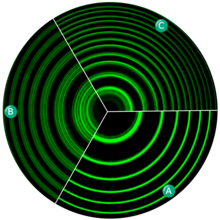
Back تأثير زيمان Arabic Эфект Зеемана Byelorussian Ефект на Зееман Bulgarian জেমান ক্রিয়া Bengali/Bangla Efecte Zeeman Catalan Zeemanův jev Czech Zeeman-effekten Danish Zeeman-Effekt German Φαινόμενο Ζέεμαν Greek Efiko de Zeeman Esperanto


The Zeeman effect (/ˈzeɪmən/ ZAY-mən, Dutch: [ˈzeːmɑn]) is the splitting of a spectral line into several components in the presence of a static magnetic field. It is caused by interaction of the magnetic field with the magnetic moment of the atomic electron associated to its orbital motion and spin; this interaction shifts some orbital energies more than others, resulting in the split spectrum. The effect is named after the Dutch physicist Pieter Zeeman, who discovered it in 1896 and received a Nobel Prize in Physics for this discovery. It is analogous to the Stark effect, the splitting of a spectral line into several components in the presence of an electric field. Also similar to the Stark effect, transitions between different components have, in general, different intensities, with some being entirely forbidden (in the dipole approximation), as governed by the selection rules.
Since the distance between the Zeeman sub-levels is a function of magnetic field strength, this effect can be used to measure magnetic field strength, e.g. that of the Sun and other stars or in laboratory plasmas.